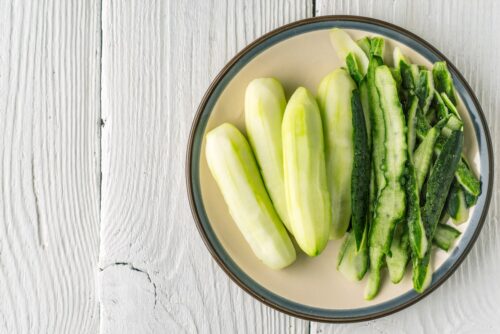You know that having a healthy and balanced diet is essential for maintaining and building muscle and strength, improving body composition and performance, and lowering your risks of developing lifestyle diseases. Besides having a nutrient-dense diet, it’s also important to remember that there are a few things that you need to do to maximize what you eat and extract as many nutrients as possible. Let’s delve into some of the key tips to make food more bioavailable to get more nutrients.
Making Food Bioavailable
Research shows that good nutrition is not only about choosing and eating healthy foods. Nutrient bioavailability is variable and easily influenced by numerous factors. Bioavailability refers to the degree nutrients are available based on how your body uses foods (your digestion and absorption) and how foods’ nutrients are available so your body metabolizes them.
Many people don’t get enough nutrients because, not only do they eat nutrient-deficient foods, but because they have compromised systems and/or because they decrease the foods’ nutrient value inadvertently. The digestion and absorption of the food you eat are key processes for good health. If your gut doesn’t function properly and you deal with digestive issues (chronic constipation, diarrhea, bloating, gas, leaky gut syndrome, etc.), your body is probably not getting all the nutrients it requires and some biological needs might not be met. Let’s now focus on how to make healthy food more bioavailable.
Chew Thoroughly
The first step to making food more bioavailable to get more nutrients is proper chewing. This is something that we can easily forget in the modern world because we are always in a rush. Many times, we wolf the food down our throats by whatever means possible. However, not chewing your food thoroughly doesn’t properly stimulate the salivary glands, so you don’t get to digest everything properly or absorb all relevant nutrients. The physical act of chewing, also, helps to increase bioavailability by breaking down the food. The most important thing to remember when it comes to chewing your foods is that you should chew each piece of food until it is almost liquid. There is no specific number of times you need to chew your food, just understand that eating is not a race to finish your food but a nourishing process.
The best thing to do is start small, and practice with smaller items of food. You can get nutritional meal replacement bars so you are getting the best bang for your back as far as nutrition is concerned while also practicing chewing thoroughly. Another approach is to put your cutlery down in between mouthfuls. When there is a fork full of food, there is something that tells us we’ve got to eat it quickly and move on to the next bite. Instead, put your cutlery down so you can take your time chewing your food thoroughly.
Eat Produce the Right Way
Buying locally sourced produce ensures that you enjoy fresh fruits and vegetables, making food more bioavailable to get more nutrients. Fruits and vegetables begin to lose their nutrients when they are separated from their soil or root nutrient source soon after harvest. So buy local produce and eat it quickly to maintain all nutrients.
Another thing to do is to avoid boiling or overcooking your vegetables since high heat destroys water-soluble vitamins especially those in green vegetables. The recommended method of cooking vegetables is steaming and blanching (plunging produce into boiling water for a short amount of time before transferring it to an ice bath).
You can also save money while eating healthily by choosing frozen vegetables and fruits as an alternative for fresh. Frozen fruits and vegetables are flash-frozen, which means that the minerals and vitamins are as well preserved as possible. This is something you can even do yourself. If you are currently getting your own fruits and vegetables, either from your own garden or from the store, you can do the freezing yourself to keep them fresher for longer periods. You can blanch vegetables, freeze them, and take them out when they are ready to hit your plate.
Another way to maximize nutrient bioavailability is by crushing, cutting, or chopping vegetables. The physical act of damaging the cell walls of plants helps release beneficial compounds. For instance, allium foods like garlic and onion emit protective compounds and help micronutrient bioavailability when they are broken by a knife.
Refrain From Overcooking Your Meats
Another way to make food more bioavailable to get more nutrients is by refraining from overcooking your food. This is especially true in the case of beef. When it comes to something like chicken, you have to make sure to cook it properly, but with regards to foods like beef, and specifically steak, the less it is cooked, the better it is for you. It’s recommended that you eat your meat with the middle slightly pink. This makes it more digestible, so you can absorb all its nutrients, such as vitamin B12, iron, zinc, magnesium, phosphorous, and of course, protein. It’s important to note that we were once feeding off raw meat when we were cavepeople and that raw meat, also, has a higher amount of creatine, which is essential for building muscle.
Conversely, charcoaling your steak makes it harder for your body to digest and metabolize it. Plus, barbecuing, smoking, or charring food over a fire greatly increases the amount of polycyclic aromatic hydrocarbons (PAHs) in the food – PAHs have been classified as carcinogenic. PAHs have been also found in roasted coffee, roasted peanuts, refined vegetable oil, and grains. Studies show that eating charcoal-broiled meats significantly lowers levels of antioxidant enzymes, glutathione peroxidase, superoxide dismutase, and antioxidant vitamins (A, C, and E).
Soak Legumes, Grains, Nuts & Seeds
Soaking legumes, grains, nuts, and seeds have been used by numerous populations all over the world for centuries. This method has been employed to avoid deficiencies and to improve the digestion of these foods. Soaking involves placing these types of foods in a large bowl, generously covering them with water, and leaving them to soak for several hours.
The purpose of soaking is to reduce phytic acids, which functions as an antioxidant but also limit iron and zinc absorption, tannins and polyphenols, anti-nutritional enzyme inhibitors. This not only improves nutrient absorption but removes gas-causing compounds, improves texture, and decreases cooking time. Soak beans 12-36 hours in water, rinse them at least once to remove phytic acid.
Do Not Peel Your Fruits and Vegetables

In the modern-day, you can lose out on one of the most important parts of fruits and vegetables: the peel. Many peel foods to make them look more appealing or blitz everything in a food processor or blend them for faster food preparation. Yet, research shows that you are missing out on important dietary fiber, vitamins, minerals, and antioxidants if you are neglecting to eat the peel. In the case of fruits, if you are putting everything in a blender, you are breaking down insoluble fiber which is crucial for the digestive process. Plus, the fibrous and pulpy parts of the fruit contain valuable nutrients that serve to fill you up as well.
It’s not much different when it comes to vegetables. In many cases, some peels are inedible (avocado, onion, garlic, hard winter squash) and you must remove the skin. But most peels and seed fractions have high antioxidant activity. For instance, a boiled potato with skin contains more vitamin C, potassium, folate, magnesium, and phosphorus than a peeled one. And the peel and seeds of a cucumber are considered its most nutrient-dense parts, containing beta-carotene, vitamins K, A, C, B, zinc, selenium, magnesium, phosphorous, and potassium.
Avoid the Microwave
Another tip to make food more bioavailable to get more nutrients is to avoid or limit your microwave use. Microwaves are widely used since they reduce cooking times exponentially. They produce a form of “electromagnetic” radiation which along with radio frequency (RF) radiation are forms of non-ionizing radiation. This type of radiation is not supposed to be dangerous. Yet, according to the FDA, microwave radiation can heat body tissue, cause burning, and can have a negative impact on the eyes and the testes.
For safety reasons and to lead in a preventative manner, it’s a good idea to avoid unnecessary radiation. In addition to keeping your health intact, it’s best to avoid microwave radiation to help preserve foods’ nutritional contents. A study showed that when broccoli was microwaved, it lost 97% of flavonoids. Therefore, you are better off cooking and warming up food in a conventional oven and steaming or blanching your vegetables.
More Tips to Increase Food Bioavailability
The following are additional tips that you can take to make your food more bioavailable to get more nutrients.
- Store food correctly. Keep food away from direct sunlight, heat, and oxygen since they destroy nutrients. Eat produce quickly or store it in the refrigerator and eat fruit as you cut it – as soon as the fruit is exposed to oxygen it starts to lose vitamins.
- Cook tomatoes. Tomatoes contain lycopene, a carotenoid and powerful antioxidant that protects against degenerative disease. Cooked tomatoes contain more lycopene than raw tomatoes. Then, add a healthy fat like olive oil to make lycopene even more bioavailable and better absorbed through the small intestinal barrier.
- Pair like with like. Fat is unique because it is carried differently thru the intestinal wall than proteins or carbohydrates. Fat soluble vitamins and phytonutrients like carotenoids and lycopene, need ‘like with like’ to increase bioavailability. Fat must be present for the fat soluble vitamins and phytonutrients to be absorbed and carried through the body. For instance, top a green salad with tomatoes, carrots, and a healthy fat salad dressing to make those phytonutrients more powerful.
- Pair vitamin C rich foods (lemons, oranges, tomatoes, etc.) with iron-rich plant foods (lentils, chickpeas, beans, etc.). When these foods are paired in a meal, iron is better absorbed. This tip is especially important for vegetarians who rely on non-heme plant sources like lentils and other legumes for iron.
As you can see, there are things you need to do to make sure you do not lose all those essential nutrients on a diet plan. Having a healthy diet is crucial, and when you are looking for that all-important well-rounded diet, it’s not just what you eat, but how you eat it. Follow the tips delineated above to make food more bioavailable to get more nutrients.
To a Fitter Healthier You,
The Fitness Wellness Mentor



